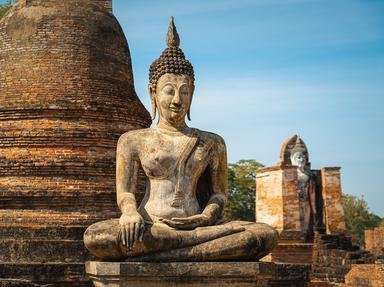Quiz Answer Key and Fun Facts
1. The Cristo Redentor or Christ the Redeemer statue sits atop Mount Corcovado overlooking Rio de Janeiro, Brazil. Which of the following descriptions of the statue is NOT correct?
2. Pedro Maria Boss, a Catholic priest, was the first to have the idea of building a religious statue atop Mount Corcovado, overlooking Rio de Janeiro. In whose honor did he propose to erect the statue?
3. In 1922, the citizens of Rio de Janeiro petitioned their national president, Epitácio Pessoa, for permission to build the statue that came to be known as the Cristo Redento or Christ the Redeemer. Who launched the petition drive?
4. Which Brazilian civil engineer won the 1922 competition to design the Christ the Redeemer statue in Rio de Janeiro?
5. Brazilian engineer Heitor da Silva Costa put together a veritable international dream team of sculptors and engineers to help him create Rio de Janeiro's Christ the Redeemer statue. Which one of the following was not involved?
6. Where did Heitor da Silva Costa get his inspiration for the soapstone tile exterior of the Christ the Redeemer statue in Rio de Janeiro?
7. The people of Rio de Janeiro, Brazil supported the construction of the Christ the Redeemer statue in many ways, among them which of the following?
8. It is possible to access Rio de Janeiro's Christ the Redeemer statue by several means. Which of the following is NOT one of them?
9. What type of meteorological event has seriously damaged Rio de Janeiro's landmark Christ the Redeemer statue on at least two occasions?
10. Outdoor statues in public places, such as Rio de Janeiro's Christ the Redeemer, are often subject to copyright laws; however many countries make a special exception that allows people to photograph these for both personal and commercial uses. What is this exception called?
Source: Author
pitegny
This quiz was reviewed by FunTrivia editor
stedman before going online.
Any errors found in FunTrivia content are routinely corrected through our feedback system.
